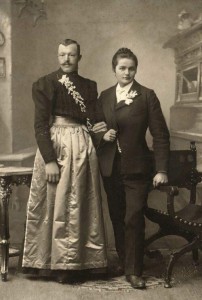Tomorrow its the beginning of WikiConference USA 2014 which is an exciting conference will be devoted to topics concerning “…the Wikimedia movement in the United States, as well as related topics of free culture and digital rights.” This is going to be an interesting couple of days.
My presentation will be made for Commons Machinery and is called Image by Wikipedia Here is the abstract
Imagine if you could go anywhere online and see the license and credit of any image you so choose. With the click of a button, you could see who created an image, where it’s been published before, what license terms are associated with it, where you can find other copies or mashups of it, and where you can buy a signed print from the creator.
Providing proper attribution for images is the key to making that happen. Unfortunately, it’s not unusual for images and other material from Wikipedia and Wikimedia Commons to find their way into newspapers or other publications with less than stellar attributions. “Image by Wikipedia” or just “Image from Internet” is a common attribution to find. Creative Commons and other open licenses have made it simple to license images for everyone’s free use, but using images licensed in such a way requires proper attribution and this has proven to be quite difficult.
In this session, we invite participants to a discussion about the relevance of attribution, the possibilities that proper attributions offers, and how contributors to Wikipedia (and Wikipedia itself!) want to be attributed when images and other materials are re-used. The session will also give examples of how the world would look if we could automate the process of attribution, demonstrate some of the tools that already exist for automatic attribution (as well as the limitations of current technologies) and lay out how Wikipedia could help people move from “Image by Wikipedia” to something more relevant.
![]()
 Join the Attribution Revolution
Join the Attribution Revolution


